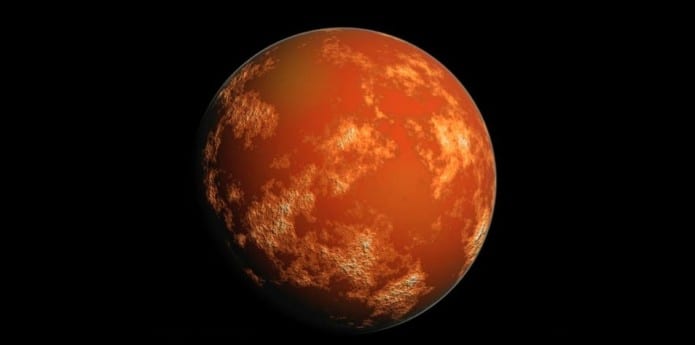Table Of Contents
Opals on Mars Could Contain Evidence of Ancient Life on Red Planet
U.K. scientists have discovered traces of opal gemstones in a meteorite which had fell from Mars and this is of great significance for future expedition of Mars.
In a new study, a research team at the University of Glasgow,Scotland, U.K. have discovered opal remnants from the Martian meteorite which could be an indication of some life on the Red planet.
Professor Martin Lee, an Earth scientist and his team studied the Martian meteorite, which had fell from Mars over a century ago, in the year 1911, in an Egyptian town known as Nakhla and hence the meteorite is referred to as Nakhla meteorite. The research team used a scanning electron microscope and studied a fragment of this Nakhla meteorite and surprisingly discovered traces of Opal gemstones.
In their research paper, the team have mentioned that the Nakhla meteorite has been found to contain 1.7 gram of opal which belongs to ‘fire opal’ variety due to its brilliant yellow, orange and red colors and is a gemstone often used in jewelry. Finding traces of opal could prove to be a breakthrough in the study of Mars because usually opal is found in hot springs which is a source of mineral rich water that supports microbial life. Further, scientists also believe that the microbial life can even be trapped and preserved in these opal deposits for ages together as in case of another gem, amber.
The evidence of opal, though in very smaller amount, is of great significance for future expedition of Mars.
During a press release, professor Lee, leading the research team, said: “Firstly, it definitively confirms findings from NASA’s imaging and exploration of the Martian surface which appeared to show deposits of opal. This is the first time that a piece of Mars here on Earth has been shown to contain opal.”
He added: “Secondly, we know that on Earth opals like these are often formed in and around hot springs. Microbial life thrives in these conditions, and opal can trap and preserve these microbes for millions of years. If Martian microbes existed, it’s possible they too may be preserved in opal deposits on the surface of Mars.”
Actually, in 2013, NASA’s rover had discovered traces of water on the surface of Mars and the entire study and findings have been discussed and published in a paper on Science Mag. Lee and his team built their study on this discovery made by NASA’s rover.
Lee thus concluded: “Closer study of Martian opals by future missions to Mars could well help us learn more about the planet’s past and whether it once held life.”
Earlier, this year, scientists had also found the presence of Methane and glass on the surface of Mars which indicated presence of ancient life on the Red planet!
The details and findings of the new study has discussed in a paper titled: “Opal-A in the Nakhla meteorite: A tracer of ephemeral liquid water in the Amazonian crust of Mars.” This research paper has been published in the journal Meteorites and Planetary Science, in the June 30 edition.

